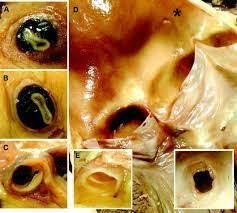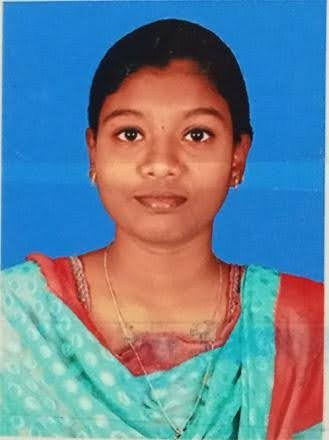Nutritional management: For a patient with triple vessel disease
Sheeba Sherin Charles*
Dietitian, Kauvery Hospital, Heartcity, Trichy, India.
*Correspondence: dietary.khc@kauveryhospitals.com
Abstract
Triple vessel disease is a serious condition that affects multiple arteries. Its a progression of CAD, and it puts patients at risk for CAD complications such as heart attack and stroke. Triple vessel disease is usually caused by atherosclerosis, hardening, or clogging of the arteries. Atherosclerosis is caused by plaque, which is formed by cholesterol, calcium, or fatty deposits within the inner walls of the arteries. Some medications, lifestyle changes, family history, food habits, and co-occurring health conditions affect the heart.
Background
Cardiovascular disease is a group of diseases affecting heart and blood vessels. These diseases can affect one or many parts of the heart and/or blood vessels. A person may be symptomatic (physically experiencing the disease) or asymptomatic (not feeling anything at all). Triple vessel CAD is a serious progression of CAD. Typically, CAD affects only one coronary artery. People with triple vessel CAD have damage in three coronary arteries, typically caused by plaque buildup. This causes an even greater reduction in blood flow and increases the risk of complications such as heart attack and stroke. Treatments for triple vessel CAD include medications to lower blood pressure and relax blood vessel walls. Surgical treatments to bypass blockages and restore blood flow are also an option.

What are the risk factors causes of TVD?
- Poor diet
- Obesity
- Lack of exercise
- Smoking and alcohol
- Diabetes
- Hereditary factors.
- High blood pressure (hypertension)
- High cholesterol (hyperlipidemia)
- Tobacco use (including vaping)
- Diet high in sodium, sugar and fat
- Chronic inflammatory or autoimmune conditions
Symptoms of TVD
- Pain chest on exertion
- An irregular or rapid heartbeat (arrhythmia)
- Shortness of breath during physical activity
- Weakness or fatigue
- Swelling in the ankles, feet and abdomen
- Abdominal pain
- Chest pain
- Heartburn or choking feeling
- Pain or discomfort in the upper areas of the body, such as back, jaw, neck, arms or shoulders.
How is TVD Detected
- Electrocardiogram
- Echocardiogram
- Stress Test
- CT Coronary Angiogram
- Cardiac catheterization and Angiogram
Prevention
1) Don’t smoke (or quit if one does)
2) Maintain a healthy weight
3) Exercise; be active
4) Follow a healthy diet
5) Do the health check on a yearly basis?
6) Improve sleep health.
Case Presentation
A 71-year-old male was admitted to the hospital with chest pain and palpitation compliant. The patient was on medication for hypertension. Patient conscious, A febrile pulse rate of 85/min.
Vitals
The patients anthropometric measurements were height-160cms, weight- 68kg, Body mass index (BMI) – 26.5 kg/m2, and Ideal body weight – 60kg. Patient was overweight. Patient biochemical values were normal.
Management
The doctor has suggested an angiogram. After completing the angiogram procedure, the patient had triple vessel disease (TVD), which was diagnosed. Then the patient was moved to the CABG plan.
During the pre-op hospital stay, nutrition management was planned according to the health condition of the patient. Followed by the patients 24-hours dietary recall. It showed he had consumed moderate carbs, low fat, low salt, and a regular diet that contains 1600 kcal, 60 g of protein, and 28 g of fat per day. This diet was given by the hospital under dietary guidance. Patient intake and urine output were normal.
Nutritional Assessment
Anthropometric Measurements
| Height | 169 cm |
| Weight | 68 kg |
| BMI | 26.5 kg/m2 (Over weight) |
| IBW | 60 kgs |
Diet History
| Diet history | Non Vegetarian |
| Food Allergy | brinjal |
| Appetite | Normal |
| GI Symptoms | Nil |
| Clinical Signs and Symptoms | Nil |
| Weight changes | Nil |
Dietary Recall
Time |
Menu |
Quantity |
| 6.00 am | Thulasi kashayam/Tea | 100 ml |
| 11.00 am | Rice + sambar + veg poriyal | 250g + 100ml+50 g |
| 4-5.00 pm | Tea + Biscuits | 200ml + 3-4 no’s |
| 8.30 pm | Idly + chutney | 3-4nos + 100 g |
| 10.00 pm | Banana | 1-2 no |
Patient Hospitalized (Pre – Op) Diet
Time |
Menu |
Quantity |
| (Early Morning) 6.00 am | Skimmed Milk | 200 ml |
| (Breakfast) 8.00 am | Wheat dosa/Ragi idiyappam / Idly + Sambar + Chutney | 3-4 no’s + 100g +100 g |
| (Mid-Morning) 11.00 am | Vegetables soup/Fruit | 150ml/150g |
| (Lunch) 12.30 pm | Rice + Sambar + Rasam+ Veg poriyal + Veg kottu +Egg white + Fruit | 200 g + 100 ml + 100 ml +100 g + 100 g+ 1no+50 g |
| (Mid evening) 4-5.00 pm | Tea + Sundal/Wheat Biscuit | 200 ml + 50 g/ 2nos |
| (Dinner) 7.30 pm | Idly/Wheat dosa/uthappam + Sambar + Chutney | 3-4nos + 100 ml +100 ml |
| (Bed time) 9.00 pm | Skimmed Milk | 150 ml |
Patient Hospitalized (Post – Op) Diet
| Day 1 | Clear liquid diet |
| Day 2 | Liquid diet |
| Day 3 | Semi solid diet |
| Day 4 | Soft diet |
Day 1- Clear Liquid Diet
Time |
Clear liquid diet |
| 12.00 am | Dhal Soup (Clear) |
| 2.00 pm | Mosambi Juice |
| 4.00 pm | Whey Water |
| 6.00 pm | Mosambi Juice |
| 8.00 pm | Dhal Soup (Clear) |
| 10.00 pm | Whey Water |
Day 2- Normal Liquid Diet
Time |
Liquid diet |
| 6.00 am | Protein Supplement |
| 8.00 am | Urad Kanji |
| 10.00 am | Protein Supplement |
| 12.00 pm | Veg Soup (Stained) |
| 2.00 pm | Rice Kanji |
| 4.00 pm | Protein Supplement |
| 6.00 pm | Protein Supplement |
| 8.00 pm | Wheat Rava Kanji |
| 10.00 pm | Protein Supplement |
Day -3 Semisolid Diet
Time |
Semisolid diet |
| 6.00 am | Protein Supplement |
| 8.00 am | Idly(Mashed) + Samabar+Chutney |
| 10.00 am | protein Supplement |
| 1.00 pm | Rasam rice + Veg kootu + Veg poriyal + 1 egg white |
| 4.00 pm | Protein Supplement |
| 6.00 pm | Protein Supplement |
| 7.45 pm | Idiyappam +Sambar+Chutney |
| 9 pm | Protein Supplement |
Day 4 – Soft Diet
Time |
Soft diet |
| 6.00 am | Protein Supplement |
| 8.00 am | Idly + Sambar +Chutney |
| 10.00 am | Apple Fruit + Protein Supplement |
| 1.00 pm | Double boiled rice + Veg kootu + Veg poriyal + 2 Egg white |
| 4.00 pm | Sundal (Boiled) |
| 6.00 pm | Protein Supplement |
| 8.00 pm | Wheat Dosa + Sambar + Chutney |
| 10.0 pm | Protein Supplement |
Day4 – Normal Diet
Time |
Normal diet |
| 6.00 am | Protein Supplement |
| 8.00 am | Wheat Uppuma+ Idly + Sambar +Chutney |
| 10.00 am | Papaya Fruit + Protein Supplement |
| 1.00 pm | White rice + Sambar + Rasam +Veg kootu + Veg poriyal + 2 Egg white |
| 4.00 pm | Sundal (Boiled) |
| 6.00 pm | Protein Supplement |
| 8.00 pm | Ragi Idiyappam + Sambar + Chutney |
| 10.00 pm | Protein Supplement |
NUTRITIONAL REQUIREMENTS
Diet |
Calorie(kcal) |
Protein(g) |
Fat(g) |
| Clear Liquid Diet (6 feeds/2 hr) | 500 | 13.5 | 2.6 |
| Liquid Diet (9 feeds/2 hr) | 1490 | 59 | 24 |
| Semi Solid Diet + Protein Supplement | 1710 | 68 | 28 |
| Soft Diet + Protein Supplement | 1800 | 74 | 30 |
| Normal Diet + Protein Supplement | 1900 | 81 | 35 |
PRICIPLES OF DIET
- Adequate calorie
- High protein
- Moderate carb
- High fibre
- Iron rich
- Low fat
- Vitamins and Minerals – as per RDA
Dietary Guidelines
1) Ideal portion breakdown: The ideal daily diet should include 6 servings of whole grains and pulses & legumes, 4 servings of vegetables, and 3 servings of fruits, 1 serving of nuts and oils. However, this may vary depending on the actual energy requirements of the patient.
2) Whole grains: Whole grain food items such as wheat , brown rice, quinoa, oats, red rice, barley, and rice varieties help improve your energy levels and are considered good for your heart. Make sure to include a couple of servings of whole grain in your daily diet.
3) Millet: Millet is rich in dietary fiber, both soluble and insoluble. The insoluble fiber in millet is known as a prebiotic, which means it supports good bacteria in your digestive system. This type of fiber is also prevents constipation.
4) Protein-rich foods: Include meat or its protein-rich alternatives such as egg white, nuts, chicken, pulses and legumes in your diet.
5) Omega 3 and omega 6 fatty acids: Omega-3 fatty acids keep the heart healthy by slightly lowering blood pressure. Lower levels of fats called triglycerides in the blood. Lower the risk of irregular heartbeats.
6) Salty foods: Limit your intake of salty foods. Prepare meals with minimal salt as it will help prevent water retention and keep blood pressure normal.
7) Water consumption: Intake of water as it helps maintain proper fluid balance in the body.
8) Controlled fat consumption: Limit your consumption of processed fats. Instead, switch to healthy fats derived from nuts, avocados, seeds, and fish oil.
9) Limit or reduce salt: Eating too much salt can lead to high blood pressure, a risk factor for heart disease. Limiting salt (sodium) is an important part of a heart-healthy diet.
10) Limit or reduce sugar: Sugar consumption leads to increased weight. The effects of added sugar intake higher blood pressure, inflammation, diabetes, and fatty liver disease are all linked to an increased risk for heart attack and stroke. Men should consume no more than 9 teaspoons (36 grams, or 150 calories) of added sugar per day. For women, the number is lower: 6 teaspoons (25 grams, or 100 calories) per day.
CONCLUSION
Therapeutic diet was given to the patient and monitored until discharge. Post-discharge diet advice was given.
REFERENCES
1) WHO. World Health Organization Global atlas on CVD prevention and control. 2011.
2) Nohara A, Kobayashi J, Mabuchi H. Retinoid X receptor heterodimer variants and cardiovascular risk factors. J Atheroscler Thromb 2009.
3) Hamer M, Stamatakis E. Overweight and obese cardiac patients have better prognosis despite reporting worse perceived health and more conventional risk factors.
4) Bajaj A, Susztak K, Damrauer SM. APOL1 and cardiovascular disease. A story in evolution. Arterioscler Thromb Vasc Biol. 2017;37:158789.

Sheeba Sherin Charles,
Dietitian.

